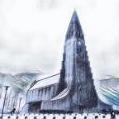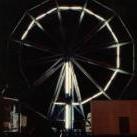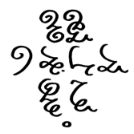Leaderboard
Popular Content
Showing content with the highest reputation on 11/04/2019 in all areas
-
"Marcia Funebre" for Piano Here a little funeral march that proably I will generate a more developed pice from it: Marcia Funebre (3).mp3 Marcia Funebre.pdf Open for suggestion and feedback! ADVICE! The dynimic notation is still not finished.4 points
-
Here the first 47 bars of the first movement of my first symphony! Allegro.mp3 Open for feedback and suggestions!2 points
-
Hi! I'm new here. I would be pleased if somebody gives me some feedback to this pice, is the last movement of a sonata for two pianos I'm writing: 3rd Movement Finale: Allegro Maestoso (3).mp3 Allegro Maestoso (1).pdf I advice that the pice it is not finished and that the coda is temporary. The sonata is called "Emperor " because is inspired in those gigantic paintings of battles. For creating the sensation of movement and horses moving there is this rhythm appearing most of the time in the pice: Thank you! 🙂2 points
-
Hello everybody! This is my latest piece, which was inspired by composers such as Arvo Pärt, Francis Poulenc and Samuel Barber. It was also a study into the use of artificial harmonics and textures. It's also important to note that the harmonics won't sound that clear in real life. However, I structured the piece so that the first parts of the music won't require clarity of the individual lines. The last third of the piece has almost no harmonics so that It becomes more "meaty". Anyways, I hope you all enjoy it, and as always, feedback is greatly appreciated!1 point
-
Wrote this last night, I'm kind of excited about it. Anxious to hear what you guys think.1 point
-
Thanks for your comment! Yeah, I as well think there is to much doubling not giving the pice a more diverse texture. I'll try to add more harmony and take away some instruments. Thanks again for your feedback! 🙂 Yes there is, but right now I'm a bit ashamed of my orchestration skills 😅!! Maybe some day I will... Thanks @Tónskáld for your comment!!!1 point
-
Yes, you correctly noticed. My last work is number 385. So I have about 400 works. At the moment I don't have my own album from which I would receive income. Perhaps in the future it will appear. Although I'm going to just gradually upload all my compositions for everyone. And also nowadays I'm continue creating new compositions, I just don’t record them because now I don’t have free time for this.1 point
-
As with all your pieces, I enjoy the colorful harmonies you use. Unlike many composers into "unconventional" harmony, you stick to a cohesive structure that make your pieces easy to follow. I also enjoy your playing techniques: very graceful and thoughtful. It's a rare treat to be able to hear a composer play his own works!1 point
-
Sounds dramatic, brooding. The flute and harp part was a nice contrast to the heaviness. One possible problem is that there's a lot of doubling on the instruments. You might want to add more harmony in there, or take away some instruments that are playing. Just a suggestion. By the way, is there a score we can glance at?1 point
-
I'm a sucker for chromatic stepwise chord progressions... this piece warmed my heart. The middle section (with the staccato woodwinds) emerged beautifully and naturally from the first section. I also liked how you gradually introduced the "dramatic" instruments—brass and snare. The crescendo to the end was well done, and I especially enjoyed the horn fanfare at the end (which will be much louder if performed by a live orchestra). I would have liked to have seen a reprise of the harp part at the beginning, perhaps re-orchestrated for a louder, more complete development of that theme. But overall, I really liked how it spoke to the triumph of the "weak" over the "strong." 😊 Nice writing! Very emotional and driving, but still interesting enough to keep my interest. Keep it up!1 point
-
Your writing reminds me of Danny Elfman a lot, which is a big compliment in my opinion. Your instumentation feels precise, as if it creating a very particular soundscape. This might be very useful if you ever decide to composer for movies, as you can relate settings and situations from the plot to the soundtrack's elements. I just find the harp part a bit repetitive. Also, it would possibly be drowned if the piece was being played by an actual orchestra. Just out of curiosity: how do you write? Straight into a DAW? Congratulations on your work, this was a very good job.1 point
-
In the context of this thread I am saying that there are different types of analysis. I am making the case that a comprehensive analysis - of anything - is of value to us. Why did Bernstein bother himself with such efforts? Because he was good at it, and because he was a generous man who wanted to share his knowledge and passion with others. Did he talk in minutiae? Of course. When you deliver the capstone lecture of an eighteen hour series you necessarily have to first get in the weeds, right? Stravinsky had come a long way since the days of Le Sacre over the course of his life, and he had to deal with the same musical problems as other composers of his time. I'm just saying that this particular lecture transcends the minutiae. By analyzing Stravinsky's music through the mask analogy, he offers a salient vision for future composers who may be troubled that there's nothing new under the sun anymore except for serialism and the self inflicted death of deconstruction. Was this of value to Stravinsky? No. Why should it? It's beside the point. It is for us, and at this point the minutiae becomes rather interesting. So, to me, anything done well in the field of music is interesting.1 point
-
I like to see different perceptions over my works, and this is no exeption. I never intended this piece to sound relaxing, but I'm glad it did to you! Thank's for listening and pointing out that part. Initially, I had composed a 1 minute piece for string orchestra, and decided to expand it into this. For that reason, some parts became (m48, for instance) became important turning points in the piece. Thank's for your oppinion 🙂 Thank you all for commenting, it makes glad that you took the time to give me your opinions!1 point
-
It is a beautiful piece. Especially I liked the transitions between 45-60, and 1:30-1:44. Well done!1 point
-
Unfortunately, the beginning of the school year has slowed down my composing and thus I haven't been able to finish any of the previous counterpoints I already had and those I started afterwards, until today. I likely began writing this fugue (in case it is) a week ago or so, and I put a lot of effort in avoiding forbidden parallels, although there are perhaps one or two of those and some instances of voice-crossing I was unable to solve. I had previously started another fugue in F (also in major mode), so this is my second one of that kind. I'm not intending to sound pedantic by saying this but... the subject sounds like something Bach could have come up with. I do not prouder! I'm just afraid that perhaps I unconsciously took parts from other Bach's subjects, because it reminds me a lot of his keyboard counterpoints in major mode, and despite some search I couldn't find anything strikingly similar but I still think I'm missing something. Anyway, here it is. It isn't as long as the one in F minor, but I hope you all enjoy it.1 point
-
I don't know how much music history you've studied up to this point, but this whole notion of material-based originality came from the genesis of the Romantic era, where the advancement of middle-class music making along with the general advancement of music printing/publishing combined. Composers started using super fancy/exotic-sounding titles and used increased harmonic changes to be more expressive and have their pick at the newly free market. I'll elaborate on my own opinions/answer more of the proposed questions if this discussion gets more lively, but I'm more a fan of the way the Classical era dealt with originality, where quality was based upon how well you could use old forms and conventions in your own style/ways. It doesn't sound very modern to us because it was their styles, but Haydn's and Beethoven's music were pretty novel when they were written. The modern era has taken this Romantic ideal of expression and newness to its extreme, trying to push progress without having the patience for it. The elitism and high-artness of modern classical music generally glosses over the music most people will listen to; how subtle its changes are to formulas, but how effectively catchy the songs are. Maybe my thoughts on this will change over time.1 point







